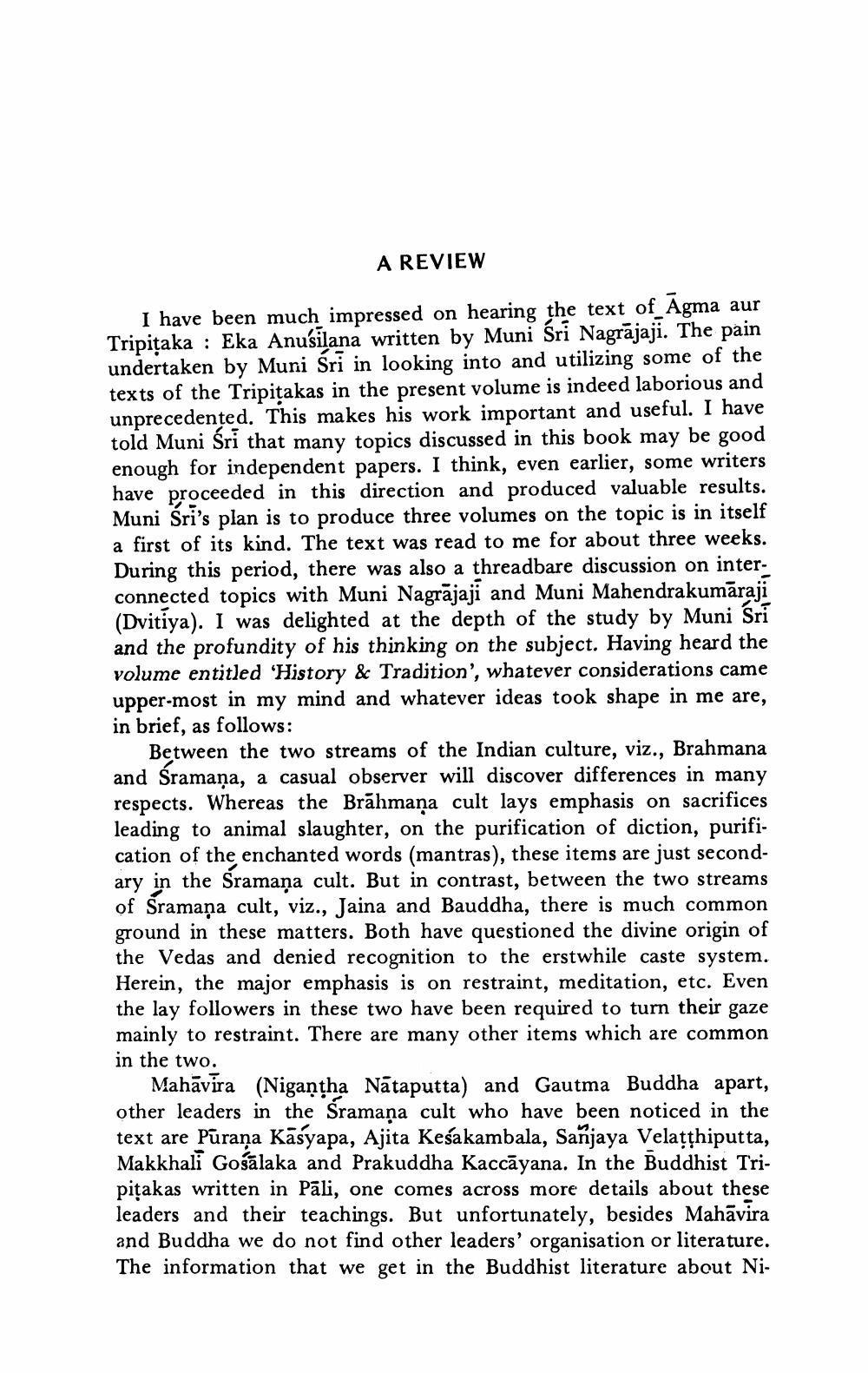________________
A REVIEW
I have been much impressed on hearing the text of Āgma aur Tripitaka : Eka Anusilana written by Muni Sri Nagrājaji. The pain undertaken by Muni Sri in looking into and utilizing some of the texts of the Tripitakas in the present volume is indeed laborious and unprecedented. This makes his work important and useful. I have told Muni Śri that many topics discussed in this book may be good enough for independent papers. I think, even earlier, some writers have proceeded in this direction and produced valuable results. Muni Sri's plan is to produce three volumes on the topic is in itself a first of its kind. The text was read to me for about three weeks. During this period, there was also a threadbare discussion on interconnected topics with Muni Nagrājaji and Muni Mahendrakumāraji (Dvitiya). I was delighted at the depth of the study by Muni Sri and the profundity of his thinking on the subject. Having heard the volume entitled 'History & Tradition', whatever considerations came upper-most in my mind and whatever ideas took shape in me are, in brief, as follows:
Between the two streams of the Indian culture, viz., Brahmana and Áramaņa, a casual observer will discover differences in many respects. Whereas the Brāhmaṇa cult lays emphasis on sacrifices leading to animal slaughter, on the purification of diction, purification of the enchanted words (mantras), these items are just secondary in the Sramaņa cult. But in contrast, between the two streams of Sramana cult, viz., Jaina and Bauddha, there is much common ground in these matters. Both have questioned the divine origin of the Vedas and denied recognition to the erstwhile caste system. Herein, the major emphasis is on restraint, meditation, etc. Even the lay followers in these two have been required to turn their gaze mainly to restraint. There are many other items which are common in the two.
Mahāvira (Nigantha Nātaputta) and Gautma Buddha apart, other leaders in the Sramana cult who have been noticed in the text are Purana Kasyapa, Ajita Kesakambala, Sanjaya Velațțhiputta, Makkhali Gośālaka and Prakuddha Kaccāyana. In the Buddhist Tripitakas written in Pāli, one comes across more details about these leaders and their teachings. But unfortunately, besides Mahāvira and Buddha we do not find other leaders' organisation or literature. The information that we get in the Buddhist literature about Ni




